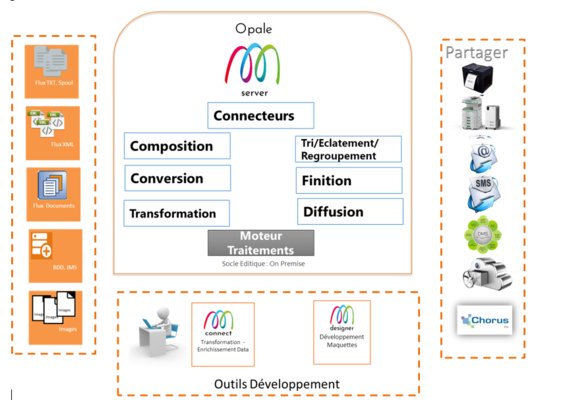OPALE - 10.0 - About - A propos de OPALE Server/en
Différence entre versions
De MappingDoc
(Page créée avec « Then, the rules engine determines the actions to be executed on the detected input files. ») |
(Page créée avec « OPALE Server notably allows you to: * Make templates out of editions by adding overlays, fonts and logos * Convert a flow from one language to another * Print out mapped e... ») |
||
| Ligne 10 : | Ligne 10 : | ||
Then, the rules engine determines the actions to be executed on the detected input files. | Then, the rules engine determines the actions to be executed on the detected input files. | ||
| − | OPALE Server | + | OPALE Server notably allows you to: |
| − | * | + | * Make templates out of editions by adding overlays, fonts and logos |
| − | * | + | * Convert a flow from one language to another |
| − | * | + | * Print out mapped editions in the native language of the printer |
| − | * | + | * Send mapped editions via e-mail or to a third-party solution |
Version du 21 mai 2019 à 08:58
OPALE Server is an application for processing editions on IBM Power i which notably includes a high-volume and high-performance composition engine enabling it to generate a huge number of editions in record time.
Version OS minimum : IBM Power i V7R1
OPALE Server is a subsystem of the l'OS/400.
A robot scans the outqueues in which the spool files are sent.
Then, the rules engine determines the actions to be executed on the detected input files.
OPALE Server notably allows you to:
- Make templates out of editions by adding overlays, fonts and logos
- Convert a flow from one language to another
- Print out mapped editions in the native language of the printer
- Send mapped editions via e-mail or to a third-party solution
Fonctionnalités supplémentaires
- Traitement des flux après composition (tri, regroupement, éclatement, options d’impression spécifiques, etc.)
- Support des imprimantes thermiques
- Communication omnicanale
- Signature électronique
- Connecteurs vers solutions d’archivage et de dématérialisation
